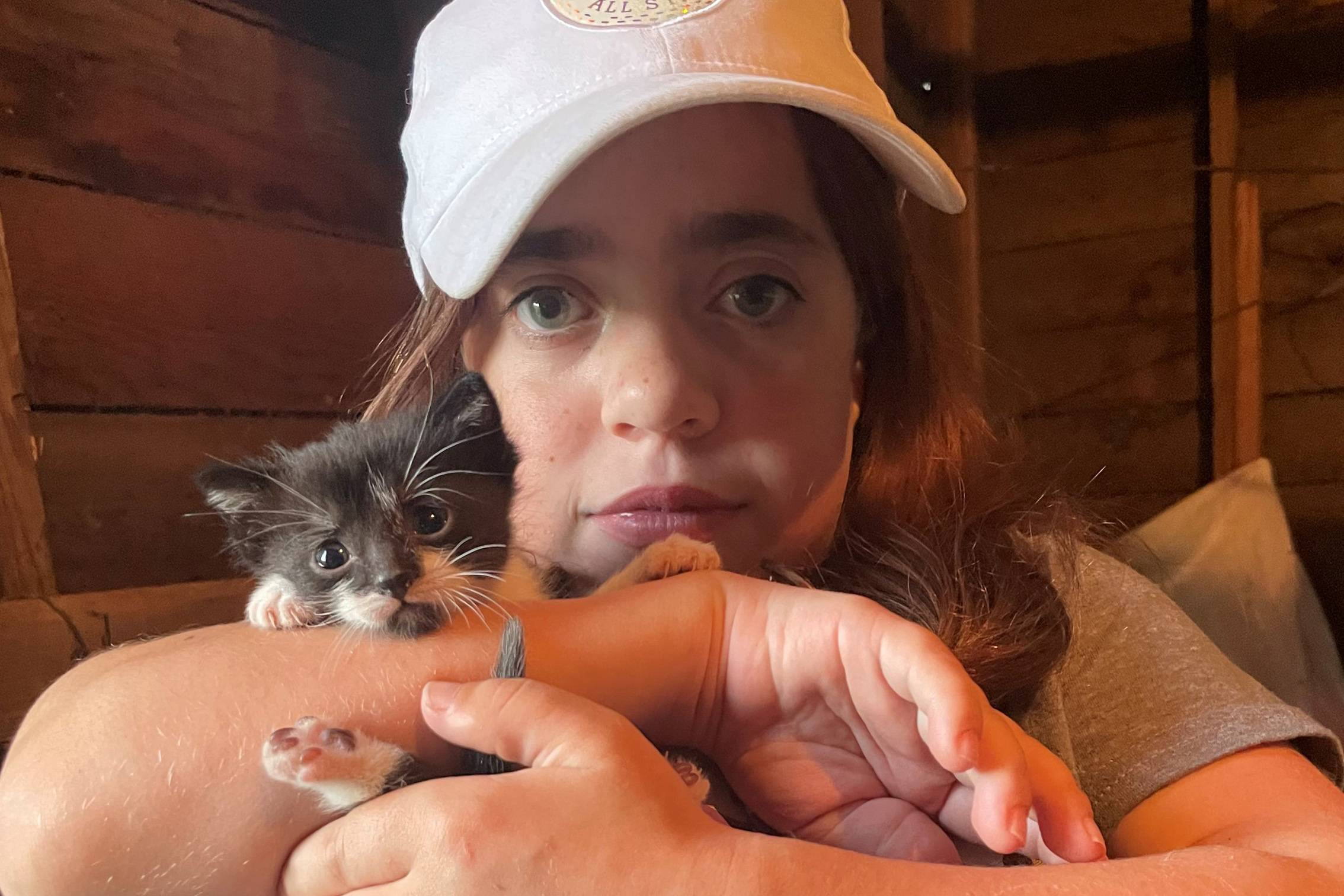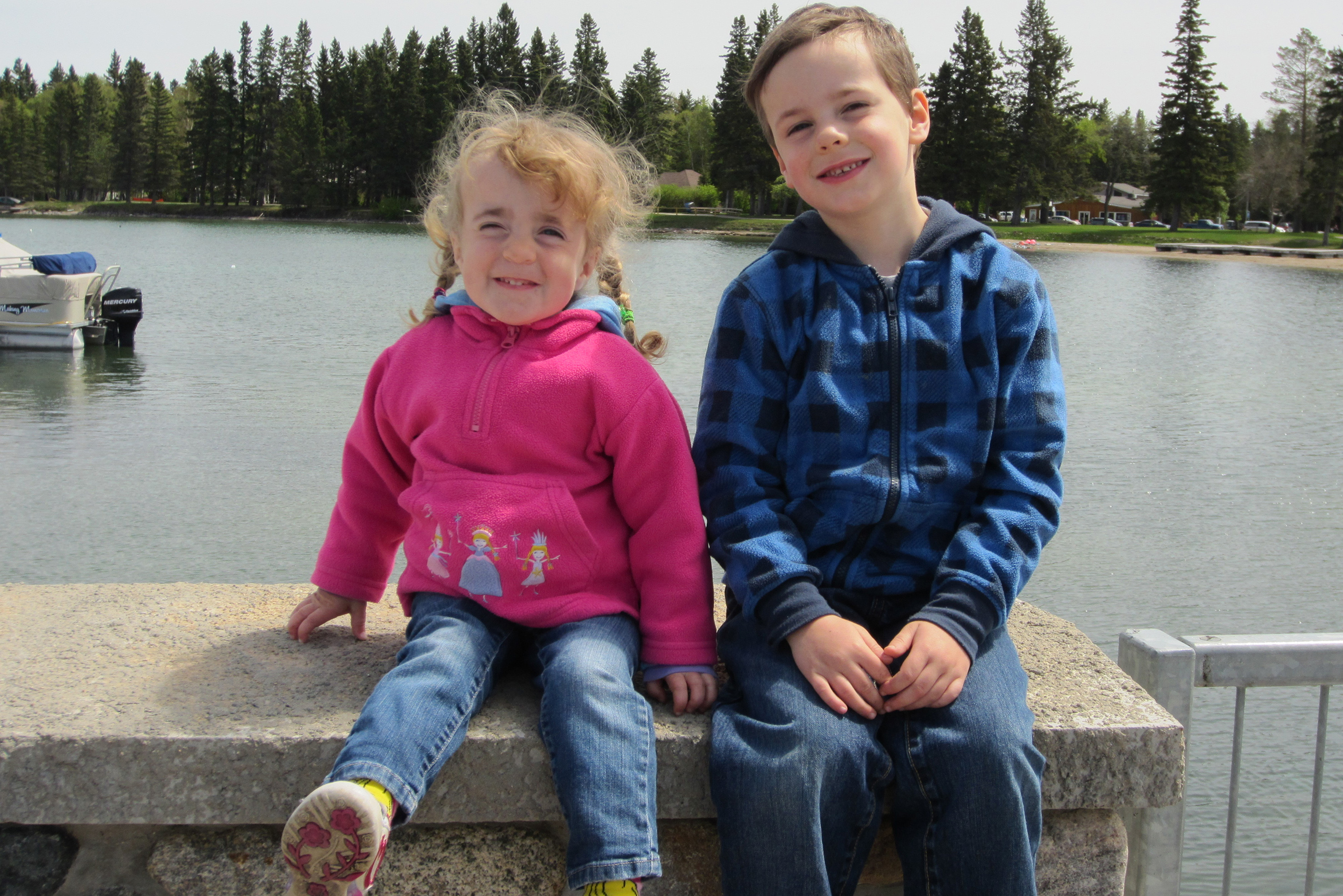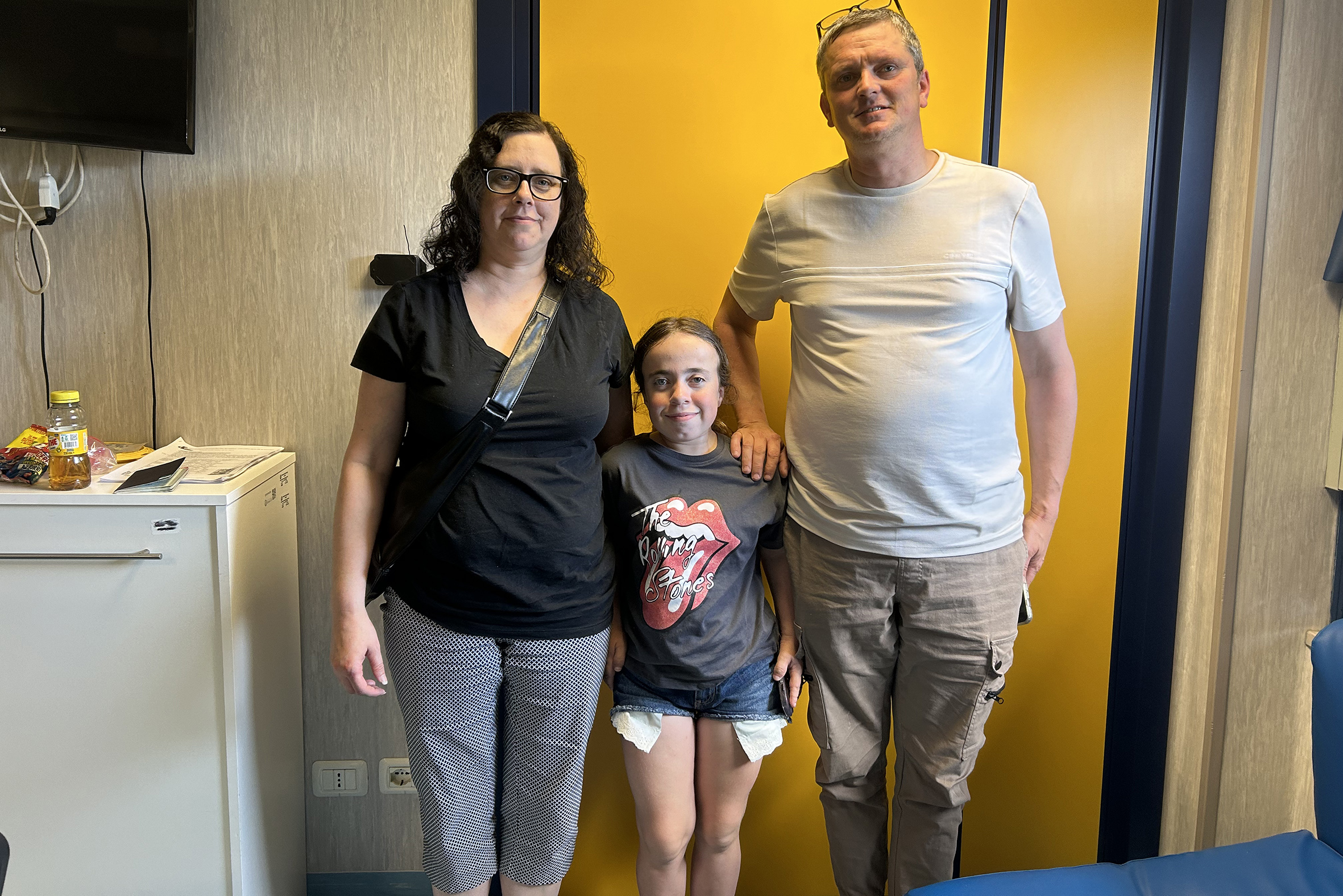The Canadian girl was born with mucopolysaccharidosis type 6. With help from the Isaac Foundation, she received important therapies in her country and participated in Italy in the trial developed by the Telethon Institute of Genetics and Medicine.
Violet was born in the spring of 2009 in a small Canadian village, Langenburg, in the western province of Saskatchewan. Her parents Larry and Jennifer, who already had a two-year-old older son, Lawson, realised that something was wrong when Violet was one year old: the child had a strange head shape and, according to some examinations, also heart problems.
For two years, they toured hospitals making examinations and tests until, when Violet was three years old, a clinical geneticist hypothesised that it might be a form of mucopolysaccharidosis, a rare genetic disease characterised by the accumulation of toxic metabolites in cells.
The hypothesis turned out to be right and Violet was diagnosed with mucopolysaccharidosis type 6, which fortunately does not impair cognitive ability but mainly leads to damage of the eyes, heart and skeleton, the organs where the accumulation of these substances is concentrated.
The importance of not being alone
The news naturally shocks them, but they soon discover that in Canada there is a foundation set up by the parents of a boy, Isaac, born with the same disease as Violet: it is called the Isaac Foundation. In addition to raising funds for research, the Foundation has managed to obtain from the Canadian government the possibility of receiving free of charge the only therapy available for MPS6, enzyme replacement therapy (ERT): this is the periodic infusion of the missing enzyme, administered once a week. The infusion lasts a good six hours and is certainly a bit limiting, but it is still able to partially compensate for the enzyme deficiency and limit the pathological effects on the organs.
"At first, when you receive a diagnosis like that, you feel alone and lost, you don't know what to do," Larry explains. That's why the Isaac Foundation has been so important to us: first of all, they helped us get this expensive drug for free, which we would otherwise not have been able to afford. Not only that, but they also put us in touch with other families who shared our condition".
«We are happy to have taken part in this study, for Violet above all, but also for having contributed to research into her disease. »
Larry, Violet's father
Violet was the third Canadian child to receive free ERT, after Isaac and another boy, Jasper. Today, at least a dozen boys with MPS6 have been diagnosed in Canada, thanks in part to the Foundation's work.
"We have participated in many events organised by the Foundation, from fundraising dinners to scientific symposia where we have given our testimony," explains Larry. "Sometimes it is difficult to explain Violet's condition to people who do not know about this disease, which is the vast majority of people, but it is very important to do so and that is why we have overcome our natural confidentiality".
Hope form Italy
In 2017, one more hope for boys like Violet came from Italy: at the Policlinico Federico II in Naples, a clinical trial of a gene therapy protocol developed by Alberto Auricchio's group from the Telethon Institute of Genetics and Medicine in Pozzuoli and coordinated by Nicola Brunetti-Pierri, also from TIGEM, has started.
The aim of the therapy, which is based on a viral vector containing a healthy version of the enzyme deficient in these patients, is to restore sufficient enzyme levels and perhaps avoid external administration. The Isaac Foundation has closely followed all stages of this research, even financing part of Auricchio's work with its own funds.
At the start of the trial, the Foundation also provided funds to cover the travel expenses of the Canadian patients: first Isaac (in 2018), then Jasper (in 2019) and finally Violet in 2020. "When they proposed to include Violet in the Italian trial, we were happily surprised, but we accepted almost immediately: we wanted to give her this extra opportunity," the parents recount. "We were at home and we all sat around the table, but we all agreed that this opportunity should be taken".
Gene therapy in the times of COVID-19
The entire family landed in Rome Fiumicino in the first weeks of February 2020, when the COVID19 pandemic had not yet officially broken out but it was now clear that the health situation was critical. "On our arrival they checked our temperature, they were all wearing masks and gloves and asked us if we had had flu-like symptoms in the last few days or had come into contact with people with symptoms. A few days later we read about the first two Italian cases of COVID-19, hospitalised in Rome... but at that time everyone said it was only a problem in China. From home they called us alarmed because they were reading the news about Italy, but we were quite calm'.
After all the necessary tests, Violet received the gene therapy on 20 February 2020: an infusion of the vector into the blood, apparently a simple drip, which actually contains a valuable therapy. A few weeks later, the whole of Italy is in lockdown due to the spread of the SARS-CoV-2 infection, especially in the North. 'We were among the few people allowed to go on medical tours,' Larry recalls. We lived in a nice house with a garden in the Rione Alto area, not far from the hospital. Both Violet and Lawson attended school remotely, as did all their peers around the world, so from a certain point of view, being in Italy at that very moment was less traumatic than expected. We were able to visit the archaeological site of Pompeii or the Amalfi coast almost on our own, walk around Naples without the usual traffic and crowds. Of course, we had to stay a good five months away from home to await the moment when we would be allowed to return to Canada. I remember that our return flight to Toronto was completely empty, there was only us in that huge plane!'.
How is Violet today
Today Violet is doing well. As a precaution, she recently resumed her enzyme therapy (but half as often, every fortnight instead of every week) because her urinary GAG values (the main indicator of toxic metabolite accumulation) were just above the warning levels.
"The doctors who are following Violet in Canada are also enthusiastic, they have learnt a lot from this experience and are in constant contact with Nicola Brunetti-Pierri, who is truly an exceptional person."
Larry, Violet's father
However, her mother says, 'you can see that she is stronger: she goes to dance three times a week, it is her passion, she has even done competitions and won medals! She does her therapy at home, so she can study while she is taking the infusion".
Violet is shy, speaks little and softly, but has bright eyes. She loves dancing and wants to go to college with her friends. She is learning to drive a car: in Canada you can start practising at 15 and get your licence at 16, after all it is the only way to get around, public transport is practically non-existent except in the big cities and the distances are very great. She has a pedal support due to her short stature, but she is learning with her dad (with whom he occasionally argues of course!). She also loves swimming, both in the pool and at the sea. They have a cat and a dog, which is very demanding to carry around.
The parents are very grateful to Italy and the Fondazione Telethon staff: 'They are all very kind and welcoming people, from the nurses to the doctors. We are happy to have taken part in this study, for Violet above all, but also for having contributed to research into her disease, in the hope that there will also be a benefit for other kids like her around the world. The doctors who are following Violet in Canada are also enthusiastic, they have learnt a lot from this experience and are in constant contact with Nicola Brunetti-Pierri, who is truly an exceptional person. We are also very grateful to Fondazione Telethon of course, we also have a kind of TV marathon in Canada to raise funds. We are aware of the importance of putting our faces on it, so we hope to do it soon in Italy too!'


